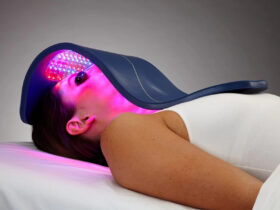Stem cell therapy offers groundbreaking potential in regenerative medicine, especially in anti-aging applications. People increasingly seek therapies that go beyond surface-level treatments to target the cellular aging process. As stem cells have the unique ability to regenerate damaged tissue, they bring new possibilities for slowing or even reversing age-related changes. Stem cell therapy in anti-aging aims to refresh, repair, and support healthier aging on a cellular level. This article explores how this therapy could revolutionize the way we think about aging.
Understanding Stem Cells in Regenerative Medicine
Types of Stem Cells Used in Therapy
Stem cells fall into three main types: embryonic, adult, and induced pluripotent (iPSCs). Each type offers different strengths in regenerative medicine. Embryonic stem cells, derived from early embryos, can become any cell type but come with ethical debates. Adult stem cells, especially mesenchymal stem cells, exist in bone marrow and fat tissue and repair specific tissues. iPSCs, adult cells reprogrammed to behave like embryonic cells, allow for versatile, ethical applications in regenerative treatments. These stem cells form the foundation of anti-aging therapies.
How Stem Cells Work: Differentiation and Renewal Capabilities
Stem cells work by differentiating into the required cell type, replacing damaged tissues. They regenerate cells for repair, improving tissue function and slowing aging. Through self-renewal, they maintain healthy cell populations and aid tissue recovery after injury. This renewal process restores tissue integrity and slows the aging effects caused by cell damage over time. Thus, the body can repair itself on a deeper level.
The Science of Tissue Repair and Regeneration
The body naturally uses stem cells to repair injuries and regenerate tissue. Stem cell therapy taps into this process by increasing stem cell numbers in targeted areas. For example, damaged tissues can receive injected stem cells that promote faster, more effective healing. Scientists study how these cells can reverse aging signs, focusing on their regenerative properties. Stem cell therapy provides a promising avenue for age-related degeneration and injury repair.
Stem Cell Therapy in Anti-Aging: Mechanisms and Benefits
Cellular Aging and the Role of Stem Cells
Aging occurs partly due to cellular senescence, where cells lose the ability to divide and function. Stem cells counteract this process by replacing these aging cells with fresh, functional ones. This rejuvenation delays physical aging, making tissues healthier and more resilient. By addressing cellular deterioration, stem cell therapy presents a pathway to preserving youthful function in the body.
Potential Anti-Aging Benefits of Stem Cell Therapy
Stem cell therapy’s potential benefits span multiple areas of aging. Skin rejuvenation reduces wrinkles and restores elasticity, promoting a more youthful look. For joint and bone health, stem cells support cartilage repair, reducing pain and restoring mobility. In organs, stem cells may restore vitality, potentially reversing age-related functional decline. Together, these benefits support overall well-being and a youthful appearance.
Current Scientific Evidence and Research
Summary of Key Studies on Stem Cell Therapy for Anti-Aging
Numerous studies explore stem cell therapy’s anti-aging applications. Key studies highlight the therapy’s role in skin elasticity, joint repair, and cell regeneration. Researchers report promising results, but more comprehensive studies are ongoing. These studies lay the groundwork for therapy improvements and increased safety.
Analysis of Experimental vs. Established Treatments
Experimental treatments lack extensive trials, while established treatments follow strict protocols for safety and effectiveness. Stem cell therapy still needs more research to confirm long-term benefits for anti-aging. Many researchers caution against unverified treatments marketed for immediate anti-aging results. Patients should seek only established therapies backed by research.
Ongoing Research and Promising Discoveries
Current research includes studies on stem cell therapy’s effects on skin and joint health. Scientists also explore its potential in brain health and other complex functions. As studies progress, new findings may unlock advanced anti-aging applications. Experts are optimistic but remain cautious, emphasizing the need for verified results before widespread adoption.
Applications of Stem Cell Therapy for Age-Related Conditions
Musculoskeletal Health: Bones, Joints, and Cartilage Regeneration
Stem cell therapy may benefit bones, joints, and cartilage, often affected by age. For instance, stem cells can repair damaged cartilage, improving joint function and mobility. By reducing inflammation, they relieve pain from arthritis and other joint issues. This application could enhance quality of life for those facing age-related joint problems.
Skin and Aesthetic Rejuvenation: Wrinkles and Skin Elasticity
In skin rejuvenation, stem cells improve elasticity, reduce wrinkles, and restore a youthful glow. They encourage collagen production, which supports smoother, firmer skin. Stem cell treatments target deep layers, offering more lasting effects than surface-level solutions. This approach provides a more comprehensive anti-aging skin solution.
Neurological Applications: Brain Health and Cognitive Function
Stem cell research extends to brain health, aiming to reverse cognitive decline. Scientists investigate whether stem cells can replace damaged brain cells to improve memory and function. The potential to support brain regeneration opens possibilities for age-related neurological conditions. While still in early stages, this application could redefine cognitive aging.
Cardiac and Organ Regeneration Potential
Stem cells may also improve heart and organ health, crucial in aging. Studies explore how stem cells can repair damaged cardiac tissue, improving heart function. Similarly, stem cells may support liver and kidney health by regenerating organ cells. Organ regeneration with stem cells could lead to longer, healthier life spans.
Risks, Limitations, and Ethical Considerations
Regulatory and Ethical Landscape
Stem cell therapy faces strict regulations to ensure patient safety. Only a few therapies currently have FDA approval for specific uses. Ethical concerns also surround stem cell sourcing, particularly with embryonic cells. Patients must verify their treatments follow ethical standards, ensuring safety and compliance.
Common Risks and Side Effects
Although promising, stem cell therapy has risks, including infection and immune rejection. Side effects vary by patient and treatment type, so medical guidance is essential. Unverified clinics offering “miracle” anti-aging treatments may put patients at unnecessary risk. Proper research and consultation minimize potential harm.
Misconceptions and False Promises in the Market
Many companies claim immediate anti-aging results without scientific backing. Patients should remain skeptical of exaggerated promises and seek reputable providers. Understanding therapy limitations helps avoid disappointment. Recognizing marketing tactics versus genuine science is key to informed decisions.
Stem Cell Therapy vs. Traditional Anti-Aging Methods
Comparison of Stem Cell Therapy with Cosmetic Procedures
Stem cell therapy differs from cosmetic methods by working at the cellular level. Unlike fillers and facelifts, stem cells rejuvenate tissues rather than masking aging. While more costly, they offer deeper, longer-lasting effects. This approach attracts those looking for a more comprehensive anti-aging solution.
How Stem Cells Offer a Unique Approach to Anti-Aging
Stem cells renew the body from within, unlike surface treatments. This unique approach supports natural repair, leading to healthier aging. Instead of temporary fixes, stem cell therapy addresses aging causes. Patients receive a holistic benefit, enhancing their overall vitality.
Cost and Accessibility Considerations
Stem cell therapy costs remain high due to the expertise and research required. The treatment’s accessibility depends on location, cost, and provider availability. Patients interested in therapy should consider their budget and seek qualified, ethical providers. Fountain of Youth SWFL offers further insights into this therapy for those interested in exploring regeneration and healing with stem cells.
The Future of Stem Cell Therapy in Anti-Aging
Upcoming Innovations in Stem Cell Therapy
Advances in genetic engineering may enhance stem cell therapy’s effectiveness. Researchers also explore nanotechnology to improve stem cell delivery. These innovations could make treatments more precise, reliable, and accessible. The field’s future looks promising, with improved anti-aging solutions on the horizon.
Expected Shifts in the Medical and Cosmetic Landscape
Stem cell therapy could redefine the anti-aging industry. As acceptance grows, more clinics may offer certified treatments. Medical and cosmetic fields will likely see increased collaboration in aging therapies. Patients may enjoy safer, more effective options as the therapy evolves.
3 Practical Tips for Those Interested in Stem Cell Therapy
- Consult Qualified Medical Experts: Seek experts to assess suitability and answer questions.
- Verify the Legitimacy of Clinics and Practitioners: Ensure providers follow safety and ethical standards.
- Understand Expected Outcomes and Limitations: Approach therapy with realistic goals to avoid disappointment.
Frequently Asked Questions (FAQs)
What is the cost range of stem cell therapy for anti-aging?
Costs vary, ranging from a few thousand to tens of thousands. Always confirm prices with trusted providers.
Are there any side effects or risks associated with stem cell therapy?
Potential side effects include infection and immune response. Discuss risks with a qualified doctor before proceeding.
How long do the effects of stem cell therapy last?
The effects vary but may last several years with proper maintenance. Results depend on individual factors.
Is stem cell therapy FDA-approved for anti-aging purposes?
No, the FDA has not approved stem cell therapy specifically for anti-aging. Be cautious of unverified claims.
Personal Experience
I consulted with experts before trying stem cell therapy to understand its full scope. Their advice helped me avoid exaggerated claims and set realistic expectations. After the treatment, I noticed subtle but genuine improvements, especially in skin elasticity and joint mobility. It confirmed the importance of choosing certified professionals for effective, safe results.
References
Stem Cells: What They Are and What They Do
Explore the fundamentals of stem cells, their types, and their potential applications in regenerative medicine.
Researchers Study Secrets of Aging via Stem Cells
Discover how Harvard researchers are investigating the role of stem cells in the aging process and potential therapeutic interventions.








Leave a Reply